
Color, 1996, 159m.
Directed by Lars von Trier
Starring Emily Watson, Stellan Skarsgård, Katrin Cartlidge, Jean-Marc Barr, Adrian Rawlins
Criterion (Blu-Ray & DVD) (US RA/R1 HD/NTSC), Artificial Eye (Blu-ray & DVD) (UK RB/R2 HD/PAL), Metronome (Scandinavia R2 PAL), Kinowelt (Germany R2 PAL), Umbrella (Australia R0 PAL), Paramount (France R2 PAL) / WS (2.35:1) (16:9) / DTS-HD 5.1, Artisan (US R1 NTSC) / WS (2.35:1)
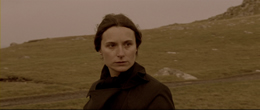
Long before he shook up audiences with audacious epics about nymphomania, melancholia, and a supernatural gender war, director Lars von Trier was 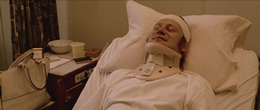 known for austere, visually lush arthouse fare like The Element of Crime and Zentropa. Then, after helming a riveting horror miniseries for TV entitled The Kingdom, he discovered the wonders of going back to basics with a raw, documentary-style approach using natural lighting and handheld cameras. This would soon evolve into the much-discussed Dogme movement, though von Trier never really embraced that completely outside of one film, The Idiots. However, for many his masterpiece remains the one film that finds a perfect balance between Dogme-style "reality" and artistic flourishes: Breaking the Waves, a galvanizing drama that managed to grab viewers by the throat in the golden indie movie year of 1996 alongside films like Fargo, Trainspotting, Swingers, and Bottle Rocket.
known for austere, visually lush arthouse fare like The Element of Crime and Zentropa. Then, after helming a riveting horror miniseries for TV entitled The Kingdom, he discovered the wonders of going back to basics with a raw, documentary-style approach using natural lighting and handheld cameras. This would soon evolve into the much-discussed Dogme movement, though von Trier never really embraced that completely outside of one film, The Idiots. However, for many his masterpiece remains the one film that finds a perfect balance between Dogme-style "reality" and artistic flourishes: Breaking the Waves, a galvanizing drama that managed to grab viewers by the throat in the golden indie movie year of 1996 alongside films like Fargo, Trainspotting, Swingers, and Bottle Rocket.
It isn't difficult to figure out early on that Breaking the Waves is intended as a sort of religious parable, albeit a particularly harsh and twisted one, with obvious echoes of classics like The Passion of Joan of Arc. However, this is definitely a film unlike any other in terms of execution as it follows the arduous romance between a simple-minded religious girl, Bess (Emily Watson in a debut for the ages) and her new husband, Jan (Skarsgård, about to star in Insomnia), a Danish oil rig worker. Her northern Scottish village is dominated by the church's dogma relegating women to vastly inferior social status, and upon marrying, Bess discovers a completely new kind of love and physical fulfillment.  Unfortunately their happiness is cut short when Jan is paralyzed in a work accident, leaving him unable to sexually satisfy her. A strange pact emerges in which Bess will seek out other men, believing this will be the path to redeem them both.
Unfortunately their happiness is cut short when Jan is paralyzed in a work accident, leaving him unable to sexually satisfy her. A strange pact emerges in which Bess will seek out other men, believing this will be the path to redeem them both. 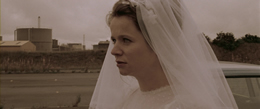
Many critics have pointed to Breaking the Waves as the first evidence of what some perceive as a punishing or misogynist streak in von Trier's films, though a closer look at his output since reveals things to be considerably more complex than that (especially when he addresses those charges head on in Dogville). What's absolutely unquestionable is that this is the first film in which he really delved completely into the potential of his actors, drawing out a once-in-a-lifetime performance from Watson, a richly textured and ambiguous one from Skarsgård, and a frankly heartbreaking one from the late Katrin Cartlidge, who gets one of the film's finest moments at the end as Bess's sister-in-law. Equally effective are the evocative, painterly tableaux used as chapter markers throughout the film, whose 1970s setting is reflected in brief snippets from rock and pop songs of the era. If that weren't enough, you even get a brief but chilling appearance by Eurocult legend Udo Kier near the end, too.
Following a successful theatrical release including an R-rated run in America, a longer director's cut of Breaking the Waves emerged on laserdisc from Criterion in 1997. The major difference was a significantly longer depiction of Bess and Jan's wedding night and sex left shortly after, all of which looks fairly tame now in terms of explicitness. That version also swapped out a late chapter using 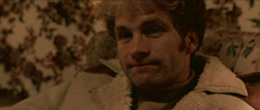 David Bowie's "Life on Mars" for Elton John's "Your Song," which is just as effective in a different way. (Significantly, neither song was included on the soundtrack release.) That cut became the standard for years courtesy of the non-anamorphic American DVD from Artisan, which ditched the Criterion extras including some deleted scenes and a selected commentary with von Trier, editor Anders Refn, and location scout Anthony Dod Mantle. Subsequent international releases were something of a mixed bag, upgrading the film to 16:9 and some adding back the commentary.
David Bowie's "Life on Mars" for Elton John's "Your Song," which is just as effective in a different way. (Significantly, neither song was included on the soundtrack release.) That cut became the standard for years courtesy of the non-anamorphic American DVD from Artisan, which ditched the Criterion extras including some deleted scenes and a selected commentary with von Trier, editor Anders Refn, and location scout Anthony Dod Mantle. Subsequent international releases were something of a mixed bag, upgrading the film to 16:9 and some adding back the commentary. 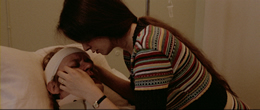
After languishing in and out of circulation for many years, Criterion finally snagged the film back again in 2014 for a dual-format release containing one Blu-ray and two DVDs, sharing identical bonus content. The new director-approved transfer looks terrific considering the original aesthetic, which has a strong, rich burnished look (shades of the sepia in The Element of Crime) and a deliberately rough, grainy texture during the majority of the footage. The DTS-HD 5.1 track also sounds very good but has less to work with given the fairly simple nature of the sound mix (basic dialogue and sound effects with those occasional bursts of rock music). The selected commentary returns here along with the trailer, deleted scenes (one with Cartlidge separated by itself) with optional von Trier commentary, and the very brief, amusing Cannes promotional film created by von Trier to... well, you'll see. Watson's much-discussed barefoot audition footage is included, too, from a VHS tape, also with commentary about the strong impression she made. 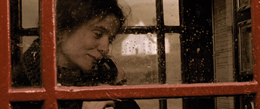
The newer video material includes a ten-minute discussion of the film's themes by filmmaker and critic Stig Björkman, a 2014 interview with actor Adrian Rawlins (a quick two minutes) who should be familiar to fans of The Woman in Black, and new interviews with Watson (17 mins.) and Skarsgård (12 mins.). Both are excellent, but the Watson one is a particular eye opener as she goes into depth about her working relationship with von Trier and, most surprisingly, really delves into the religious cult she belonged to from birth and which cut her off when she agreed to do the film. Needless to say, it casts a fascinating light on her performance, as does her mention of von Trier's own personal situation at the time. The typically striking packaging also adds a sizable booklet with an essay by critic David Sterritt and an interview excerpt from the 1999 book Trier on von Trier, in which he tackles issues like his own religious viewers, the Dreyer influence, and much more. A terrific film that only seems to get better with age, finally back in circulation in a worthy edition.
Reviewed on April 11, 2014.








